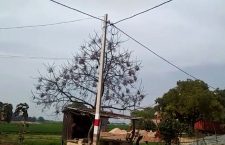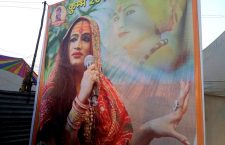The 2019 Swacch Survekshan was conducted between 4th and 31st January in 4,237 towns and cities across the country to evaluate their sanitation and cleanliness. The supposedly largest cleanliness survey in the world is a part of the Swacch Bharat Mission and has seen monumental growth since its first edition in 2016 which only covered 76 cities. For the first time, the survey was entirely digital and paperless as well.
Data for this year’s survey was collected from four different sources – citizen feedback, direct observation, service level progress and certification for garbage and open defecation free cities. Given the importance of citizen feedback, a variety of channels were created — swachhata helpline number 1969, written complaints, the Swachh Survekshan 2019 portal, and the MoHUA-Swacchata app.
“The topmost priority under this survey was the installation of toilets, to examine where the toilets have been made and where they are missing — and if they have been made, whether they are clean or not,” claimed Mohan Sahu, the Chairman of Banda municipal corporation. Although the survey grades overall cleanliness, the newly added city certification of ‘Open Defecation Free’ (ODF) certainly emphasised the importance of the physical presence of public toilets. According to Sahu, the municipal corporation’s biggest push has been to ensure public awareness. He quickly made a numbered list of the ways they have attempted to do just that: “We have held awareness programs with street plays and magician acts. We have emphasised cleanliness in many wards. The municipal departments have also done wall painting in every area, and made use of hoardings.” On a grassroots level, he said, “10-member ward teams were also made who went door to door to make citizens aware of the [MoHUA] app”.
But the confidence with which Sahu spoke about the objectives of the survey and his involvement seemed to fade down the chain of command. “I haven’t downloaded the app,” said Santosh Kumar, the chief engineer of the Banda municipal corporation, “Because the people from the central government who have been assigned to conduct the survey have the app downloaded and they send their report online to the government accordingly.” According to him, he had nothing to do with the survey and its conduct. Sanjay, a computer operator associated with the 2019 survey had no trouble explaining how the Swachhata app worked: “Any problems or complaints a citizen may have related to cleanliness can be registered here for further action.” He added, “I have made people download the app on their mobile phones.” But when pressed for details of any kind, he faltered quickly. When asked on whose phones the app was downloaded, he seemed lost; when we asked if it was downloaded for the people in slums, he agreed but passed the buck onto the ward teams, “Yes, the people in our team are responsible to do this work.” When asked for an estimate for the number of people they managed to convince to download the app, he seemed skittish. It took him a while to noncommittally say, “Maybe 100 or 150.”
Gyanpratap, a member of the ward teams in Banda, was even less specific. “On different occasions, the team was called to work,” he said, “We have to work accordingly to make people aware of the app and the survey as well.” He added no details about the number of times his team worked, or what they did. It took him some time to recall his team name when asked, but he said that it was “Swacch Graha”.
83% of the citizens in UP were aware that their area of residence was a part of the 2018 Survey. And while Banda is covered with friendly, informative and encouraging wall art about the Swacch Bharat Mission and even the survey, this has little correlation to the level of popular awareness. When Manoj, a resident of Banda, was asked if he knew about the survey, he said “no — he was not informed by anyone, not even the ward members.” Arun Tiwari, another resident, actually had feedback to share about the cleanliness in his colony: “I am not at all satisfied, because the cleaner hasn’t even come here for a single day.” But he didn’t know how to inform the authorities of this problem.
According to Kumar: “There are many mediums through which the complaints can reach me — from the Tehsil office or the Chief Minister’s online portal, helpline numbers, references from several district-level officers, letters posted by people.” But what happens to the complaints received through the app, especially if he claims that the data is only processed by the central government? He said, rather flatly, “Whatever complaints the locals make on this app are noted by the survey team.”
64 lakh people around the country have given their feedback in the course of the 2019 survey; 1.16 crore people have downloaded the app. However, the confusion among ground-level officials, especially regarding the app, clearly illustrate that the ‘smart’ monitoring may be better to promote the work of the central government on rural sanitation, and less effective at actually ensuring better quality sanitation for rural communities.
This Khabar Lahariya article first appeared on Firstpost.

